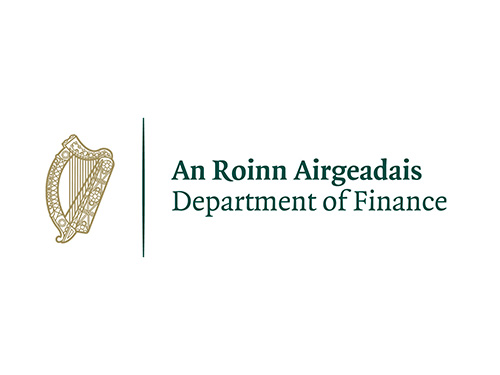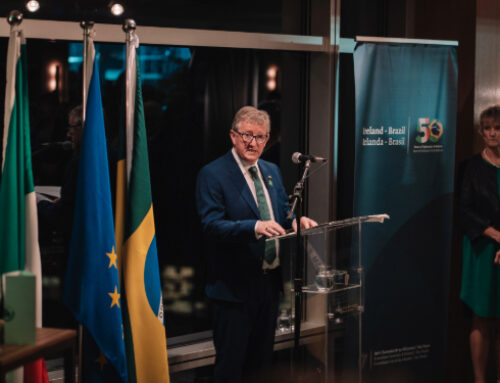From the Department of Finance
The Temporary Wage Subsidy Scheme (TWSS) was introduced on March 26 to provide income support to eligible employees where the employer’s business activities have been negatively impacted by the COVID-19 pandemic.
The aim of the scheme is to maximise staff retention and firm viability by maintaining the link between the employer and employee. The rate is set with respect to previous average net wage levels.
Many employers (over 43,000 as of today) have registered for the scheme and over 26,000 of these have already received a refund. The Minister For Finance Paschal Donohoe has been advised by the Revenue Commissioners that over 255,000 employees have already received at least one payment under the scheme, and that approximately 84% of employees have also received a top-up payment from their employer.
Section 28 of the relevant legislation, the Emergency Measures in the Public Interest (COVID-19) Act 2020 makes provision for the Minister for Finance to determine the amount of the temporary wage subsidy, including in relation to those earning in excess of €586 per week (€38,000 pa). Furthermore, it is acknowledged that as the scheme has been developed at speed there are imperfections and anomalies arising, including for lower-paid employees.
Therefore, Minister Donohoe has today (Wednesday) announced some further changes to the Scheme which apply to those earning less than €500 per week (approx. €31,000) as well as those earning in excess of €586 per week (€38,000).
Employees with net pay less than €586 per week (€38,000):
For those employees with previous average net pay up to €412 per week (equivalent to almost €24,400) the subsidy will be increased from 70% to 85% of their previous net weekly pay.
For those employees with previous average net pay between €412 and €500 per week (equivalent to €24,400-€31,000), the subsidy will be up to €350 per week
In addition, where an employer wishes to pay a greater level of top-up – beyond the outstanding 15% of previous pay – (in respect of employees with net pay less than €412 per week) in order to bring the employee’s pay to €350 per week then tapering would not be applied to the subsidy.
There are no changes in respect of those whose previous average net pay was between €500 and €586 per week (equivalent to €31,000-€38,000), who will continue to receive a subsidy of up to 70% of previous net income, up to a maximum of €410 per week.
These changes mean that more employees will now receive a subsidy of €350 per week, and those with previous net pay below €412 per week will now receive a greater level of subsidy.
Employees with net pay in excess of €586 per week (€38,000)
For employees with previous net pay in excess of €586 per week (equivalent to €38,000), a tiered approach will apply. The maximum subsidy payable for these remains €350 per week. The tiered approach takes into account both the amount paid by the employer and the level of reduction in pay borne by that employee as follows:
Gross Amount paid by Employer
Up to 60% of employee’s previous average net weekly pay – Subsidy of up to €350 per week
Between 60% and 80% of employee’s previous average net weekly pay – subsidy of up to €205 per week
Over 80% of employee’s previous average net weekly pay -No subsidy payable
Tapering of the subsidy will apply to all cases where the gross pay paid by the employer and the subsidy exceed the previous average net weekly pay. This is calculated by subtracting the amount paid by the employer from the previous average net weekly pay. This is to ensure that no employee would be better off under the scheme.
Minister Donohoe has also determined that the wage subsidy is now available to support employees where the average net pre-COVID-19 salary was greater than €76,000, and their gross post-COVID-19 salary has fallen below €76,000. The tiered arrangement applicable to gross incomes in excess of €38,000 will apply in such circumstances.
Therefore, if an employee was earning over €76,000 gross and has now been reduced to below €960 net pay a week, and their reduction is more than 20% then a subsidy of up to €205 would be payable and if the reduction was more than 40% a subsidy of up to €350 would be payable. To calculate the level of subsidy payable, current gross pay will be compared with previous average net weekly pay for January/February. This subsidy will be tapered so as to ensure that the total net income (employer contribution + wage subsidy) does not exceed €960 net per week.
The updated measures will apply for payroll with a pay date on or after the 4 May and received by the Revenue Commissioners on or after that date (no back-dating of increased subsidy will apply).
Revenue are currently making the necessary changes to their systems to implement these changes and move to phase 2 of the scheme. This phase will see a personal subsidy amount paid in respect of each employee and recoupment of any amounts overpaid to employers during the introductory interim phase.
Qualification Criteria
There is no change to the qualification criteria for employers.
The Subsidy Scheme is open to employers who self-declare to Revenue that they have experienced significant negative economic disruption due to COVID-19. They should be able to show that they meet the criteria laid out in Revenue’s published Guidance on Employer Eligibility and Supporting Proofs https://www.revenue.ie/en/corporate/communications/documents/guidance-on-employer-eligibility-and-supportingproofs.pdf.





